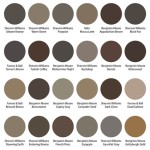Color Scheme for Interior Paintings: A Guide to Enhance Your Living Space
Selecting the perfect color scheme for your interior paintings can significantly impact the overall aesthetic and ambiance of your living space. A well-chosen palette can create a harmonious and inviting atmosphere, while a poorly executed one can result in a cluttered and uninspiring environment.
## Elements of a Color SchemeTo create a cohesive color scheme, it's essential to consider the following elements:
*Hue:
The primary color, such as red, blue, or green. *Saturation:
The intensity of the color, from dull to vibrant. *Tone:
The lightness or darkness of the color, ranging from light to deep. *Temperature:
Whether the color is warm (e.g., red, orange) or cool (e.g., blue, green). ## Choosing a Color SchemeThere are various approaches to selecting a color scheme. Consider these techniques:
*Monotone:
Use different shades and tones of a single hue. *Analogous:
Select colors adjacent to each other on the color wheel (e.g., blue, green, and yellow). *Complementary:
Pair opposite colors on the color wheel for a striking contrast (e.g., red and green). *Triadic:
Use three colors spaced equally around the color wheel (e.g., red, yellow, and blue). ## Effects of Color on MoodDifferent colors can evoke varying emotions and set different moods. Warm colors, like reds and oranges, create an energetic and inviting atmosphere. Cool colors, like blues and greens, evoke a sense of calm and relaxation. Neutral colors, such as white, gray, and black, provide a versatile base that can complement any accent color.
## Practical ConsiderationsBeyond aesthetics, there are practical aspects to consider when choosing a color scheme:
*Natural light:
The amount of natural light in a room influences the overall appearance of colors. Cooler colors may appear bolder in brightly lit spaces, while warmer colors create coziness in rooms with limited natural light. *Furniture and accessories:
The colors of your furniture and décor can significantly impact the color scheme. Choose a palette that complements existing pieces or use neutral colors that allow you to easily swap out accessories. *Purpose of the space:
Consider the intended use of a room when selecting colors. For example, a vibrant and stimulating color scheme is suitable for a playroom or study, while a more soothing palette is appropriate for a bedroom or bathroom. ## Tips for Creating a Cohesive Color SchemeFollow these tips to achieve a harmonious color scheme:
*Choose a dominant color:
Select a primary hue that sets the overall tone and anchors the scheme. *Add accent colors:
Introduce complementary or analogous colors to add interest and visual depth. *Balance warm and cool colors:
Mix warm and cool colors to create a visually pleasing balance. *Consider the scale and proportion:
Use different shades and tones of the same color to create visual interest while maintaining harmony. *Experiment with patterns:
Incorporate patterns in fabrics, wallpapers, or artwork to add complexity and movement to the color scheme.
Sea Salt And Dorian Gray Sherwin Williams Google Search House Color Palettes Paint Interior Schemes

Whole House Paint Color Schemes Palettes Interior

Earthy Interior Paint Color Palette

Best Interior Paint Colors Whole House Color Scheme Abby Organizes
:strip_icc()/101653966-4c2c8cdc7baa43f6aac0610a04c9e215.jpg?strip=all)
Interior Color Schemes

Interior Color Palette Ideas For The Entire House Easy Pale Paint Colors Home Schemes

Warm And Cozy Interior Paint Color Palette

Interior Paint Color And Palette Ideas With Pictures Home Bunch Design

20 Top Interior Color Schemes For Your House Design Foyr Neo

Color Trends For 2024 Best Colors Interior Paint
Related Posts








